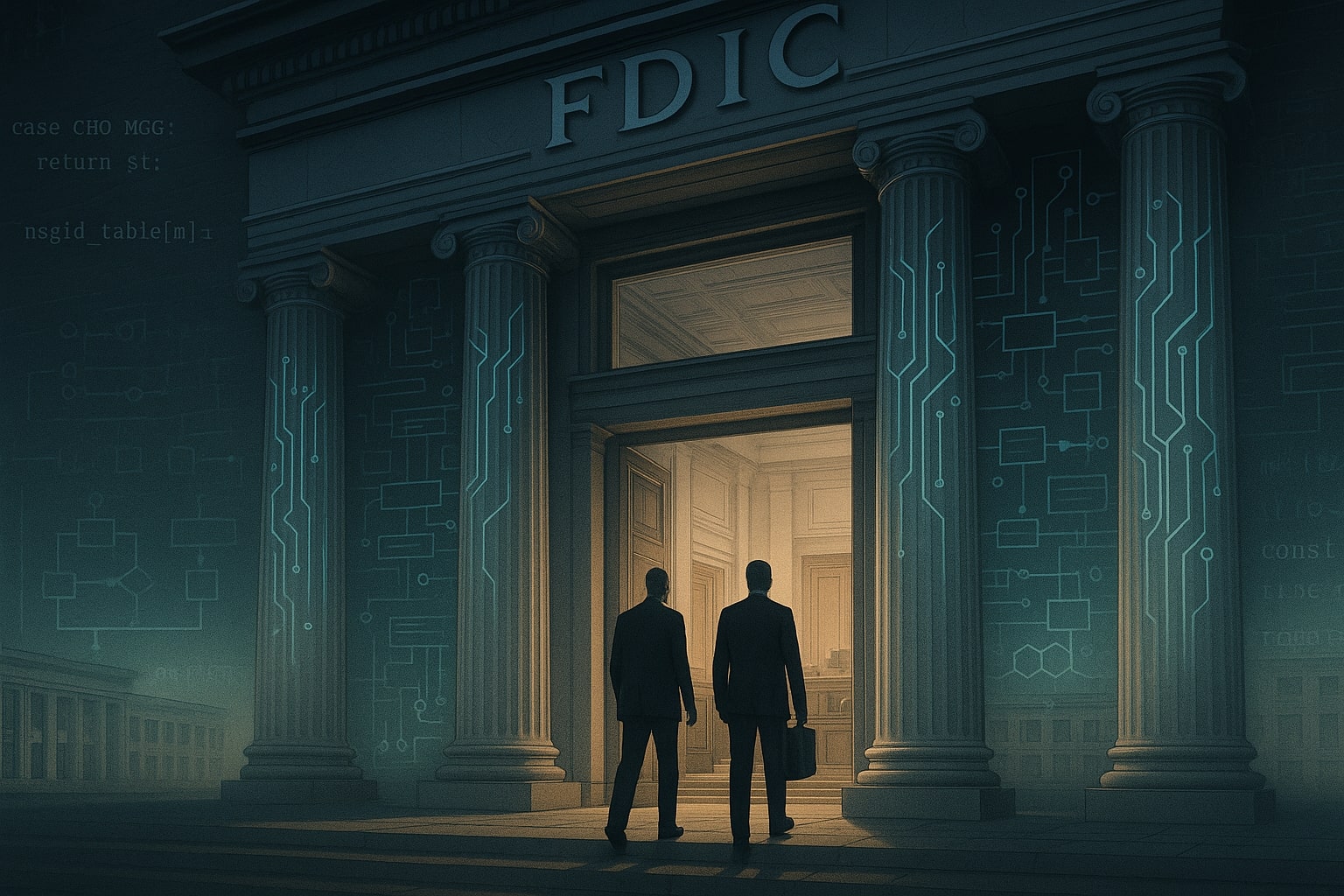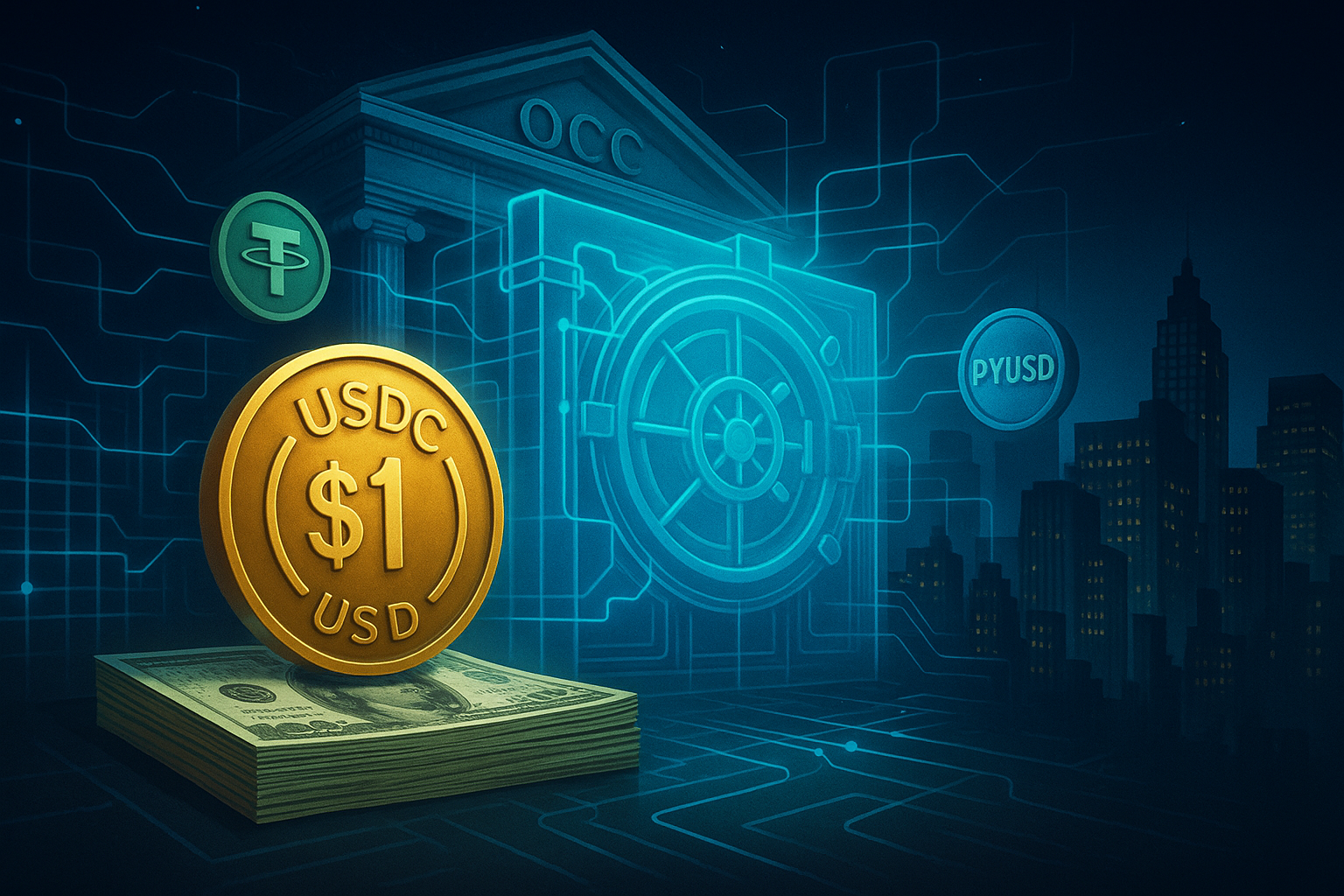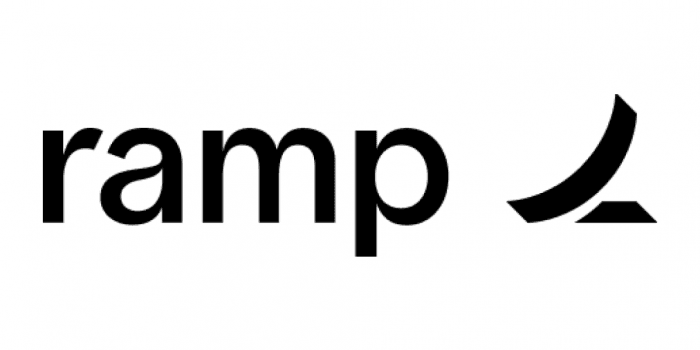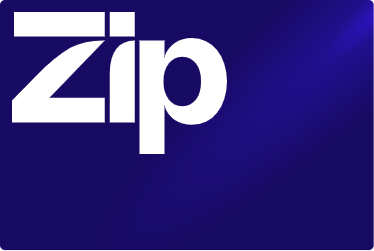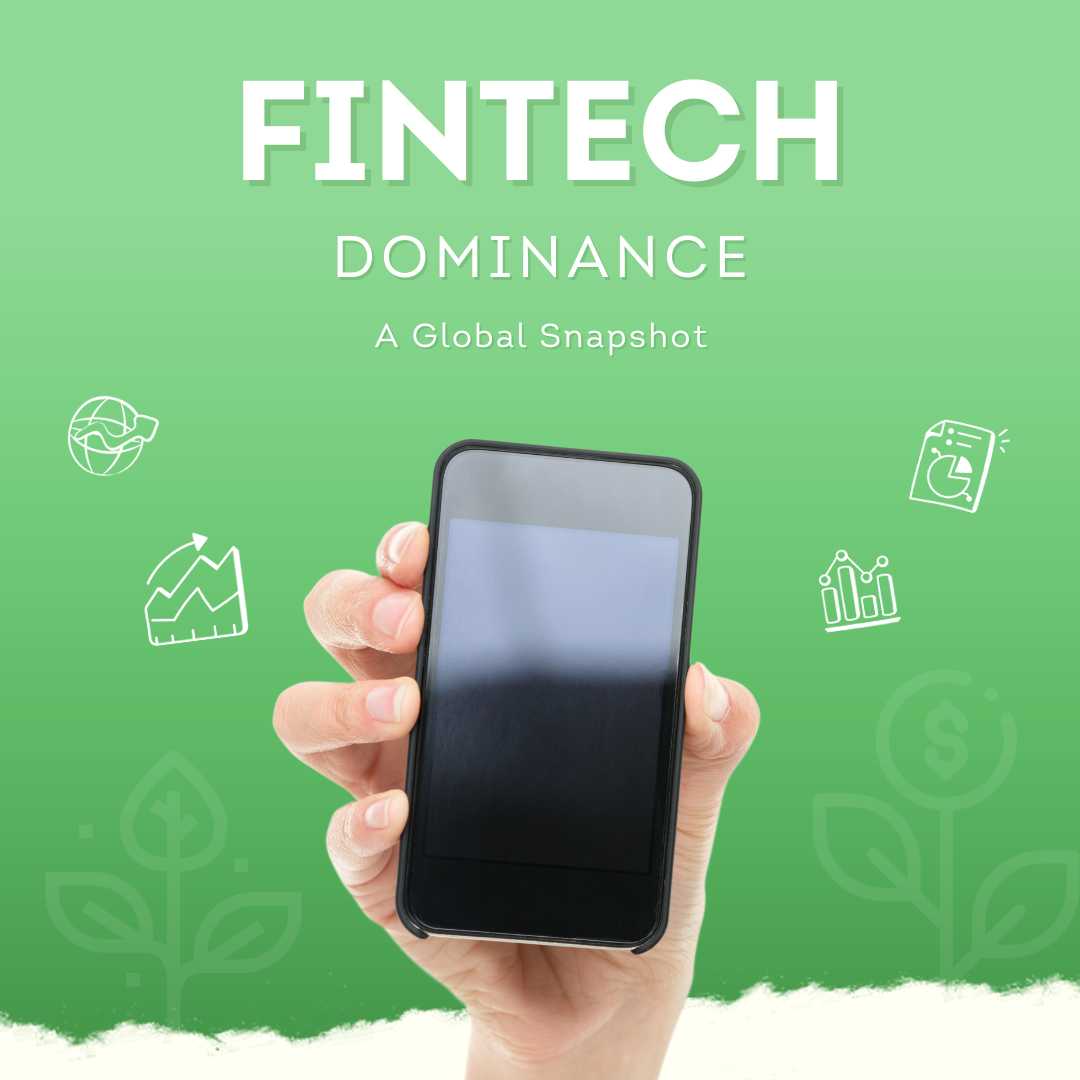Stablecoins – digital tokens pegged to fiat currency – have quietly moved from a crypto niche to the forefront of finance. In 2024, the total value of stablecoin transactions reached $27.6 trillion, officially exceeding Visa’s annual payment volume and even edging out Mastercard. By early 2025 the stablecoin market swelled to around $232 billion in circulation – 45× larger than in 2019 – with two players, Tether’s USDT and Circle’s USDC, commanding roughly 86% of that market. This surge has attracted mainstream interest from fintech giants and Wall Street banks, setting the stage for an intense race to shape the future of digital dollars.
At the center of this race is Circle Internet Financial, the issuer of the USDC stablecoin. Once known only in crypto circles, Circle grabbed headlines in mid-2025 with a blockbuster IPO that valued the company near $18 billion. Its stock (ticker CRCL) nearly tripled on the first day of trading after raising over $1 billion in the offering. Circle’s public debut – the largest U.S. crypto IPO since Coinbase in 2021 – was hailed by industry boosters as a milestone anointing stablecoins as an essential payments backbone for the emerging digital economy. The question now is whether Circle’s compliance-first strategy can give it an edge over an entrenched rival (Tether), new fintech entrants like PayPal, and even banking behemoths like JPMorgan’s Onyx, all vying to dominate the next generation of tokenized money.
Table of Contents
ToggleStablecoins Go Mainstream
Just a few years ago, stablecoins were primarily used by crypto traders as on-chain parking spots for cash. Today, they are breaking into the mainstream. The average supply of stablecoins in circulation has been growing about 28% year-over-year, and usage is exploding. By 2024, stablecoins had processed more value in transfers than the world’s largest card networks. At $27.6 trillion for the year, on-chain stablecoin transfer volume surpassed the combined volume of Visa and Mastercard by roughly 7–10%. For context, stablecoin payments also outpaced PayPal’s annual payments volume and were approaching parity with Visa’s own $13 trillion in payments. In other words, digital dollar tokens zipping around blockchains are now moving as much money as the biggest traditional payment systems – a remarkable leap from their humble origins.
What’s driving this surge is stablecoins’ appeal as fast, low-cost, always-on dollars in an increasingly online and global economy. Unlike bank wires or card networks that batch-settle and close on weekends, stablecoin transfers settle in seconds, 24/7, with finality. This makes them ideal for use cases like cross-border business payments, remittances, and round-the-clock e-commerce, where waiting for banks to reopen is friction businesses no longer want to tolerate. Indeed, even major banks that once kept their distance have begun experimenting with USDC and other stablecoins for settlement, seeing a “new breath of life” in blockchain-based dollars. Financial institutions from Standard Chartered (planning an HK-dollar stablecoin) to Bank of America and Stripe have signaled intentions to launch or use stablecoins, underscoring that these tokens are no longer just a crypto curiosity but a strategic focus for the future of money. Regulators, too, have taken notice. In the United States, momentum has been building for federal legislation to regulate stablecoins, with a bill advancing in Congress in 2025 to require full 1:1 backing with liquid assets and regular reserve disclosures. Lawmakers see an opportunity to legitimize the asset class and ensure the dollar maintains its dominance in a digital era. In short, stablecoins have “arrived” – and a diverse cast of players are now racing to set the standards.

Circle’s Strategy: Transparency and Trust as a Moat
Amid this rapid growth, Circle has positioned itself as the adult in the room of stablecoins, betting that rigorous transparency and regulatory compliance will distinguish it from rivals. Circle’s flagship USD Coin (USDC), launched in 2018, is a fully reserved “digital dollar” backed 1:1 by cash and short-term U.S. Treasurys held with reputable financial institutions. The company voluntarily provides daily snapshots of its reserve balances and monthly attestation reports from a major accounting firm. Every USDC in circulation is matched by a dollar in a bank or Treasury repo managed by BlackRock and custodied at BNY Mellon, a G-SIB (global systemically important bank). This conservative, transparent approach is akin to a regulated money-market fund wrapped in blockchain form – a stark contrast to the opaque practices that have long shrouded Tether’s USDT.
Today, Tether’s USDT remains the largest stablecoin by far, with a market capitalization recently estimated around $143–158 billion. Tether enjoys the deepest liquidity and is the trading lifeblood on many offshore crypto exchanges. However, its issuer (iFinex) operates out of Hong Kong and has limited regulatory oversight, which means many institutions view USDT with caution. Tether only began disclosing reserve breakdowns after regulatory fines, and as of late 2024 it reportedly still held about 18% of reserves in risky or illiquid assets (like other crypto and loans). By comparison, Circle’s USDC (the second-largest stablecoin, around $58–61 billion in circulation by 2025) has won trust among U.S. institutions by over-collateralizing with cash-quality assets and behaving like a regulated entity even before it’s legally required. USDC’s reserves have shifted increasingly into ultra-safe instruments (Treasury bills and overnight repos), eliminating exposure to commercial paper or unsecured debt. This risk-averse stance proved its worth in March 2023, when the collapse of Silicon Valley Bank briefly left $3.3 billion of Circle’s cash reserves in limbo. USDC’s price depegged to $0.88 amid the panic, but Circle swiftly assured redemption and even vowed to cover any shortfall with corporate funds. Thanks to those measures (and federal intervention to backstop SVB’s deposits), USDC regained its $1.00 peg within days. The episode underscored both the vulnerabilities and the resilience of Circle’s model: while reliance on the traditional banking system posed a temporary risk, Circle’s transparency and support from regulators ultimately shored up confidence.
In June 2025 – fresh off its IPO – Circle applied to become a U.S. national trust bank (to be named First National Digital Currency Bank, N.A.), in what would make it only the second crypto firm ever with an OCC-chartered bank entity. If approved, this charter lets Circle custody its own reserves and directly hold digital assets for clients, under federal oversight. Unlike a traditional bank, Circle’s trust bank wouldn’t make loans or take retail deposits; it would function more like a regulated financial market utility, bolstering USDC’s infrastructure and meeting anticipated requirements of the new stablecoin law. Circle’s CEO framed it as laying a foundation “the world’s leading institutions are going to be comfortable building on”. In other words, Circle aims to be the bridge between crypto and banking – the issuer that large corporations, fintechs, and eventually millions of users can rely on for a digital dollar that is as well-regulated as a bank deposit. This is Circle’s moat: turning transparency and regulatory compliance into a competitive advantage, especially if lawmakers make those practices mandatory for all stablecoin issuers (which would erode the appeal of less regulated rivals).
Circle is also investing heavily in technology to broaden USDC’s utility. The company has made USDC available natively on 20 different blockchain networks (from Ethereum and Solana to emerging chains), far more than most competitors. It even built a Cross-Chain Transfer Protocol (CCTP) that lets institutions move USDC between blockchains without relying on third-party bridges – reducing the risk of hacks that have plagued crypto bridge systems. Additionally, Circle offers APIs that allow fintech apps to seamlessly integrate USDC for things like payments, payroll, and invoicing. These technical integrations target enterprise adoption: as Circle emphasizes, it caters “to financial institutions and large corporates” that move hundreds of millions through its rails weekly. By prioritizing stability, compliance, and developer-friendly infrastructure over the more speculative DeFi hype, Circle has carved out a reputation as the stablecoin for serious finance. Still, it faces a paradox: in the short term, this discipline has meant slower growth and market share loss to Tether in unregulated venues (many traders simply chase the deepest liquidity, which USDT currently has). The bet is that in the long run, liquidity will follow legitimacy – and on that front, Circle is preparing for an era when only fully transparent, regulated stablecoins can thrive.
Fintech Challengers: PayPal’s Push for a Mainstream Stablecoin
The stablecoin boom has not gone unnoticed by traditional fintech firms. In 2023, PayPal became the first major payment company to launch its own U.S. dollar stablecoin, PayPal USD (PYUSD). Issued in partnership with Paxos Trust, PYUSD is fully backed by dollar deposits and Treasurys, much like USDC. PayPal’s move was a strong signal that stablecoins are expanding beyond crypto trading into everyday payments and fintech applications. However, nearly two years on, PayPal’s stablecoin remains a minnow in a sea dominated by crypto-native giants. As of April 2025, PYUSD’s total circulation was about $868 million, trailing far behind USDC and light-years behind Tether’s ~$145 billion supply. Despite the PayPal brand’s ubiquity, PYUSD has struggled to gain significant market traction – a testament to the network effects that incumbents like USDT and USDC enjoy.
PayPal is now aggressively leveraging its vast user base and platform integrations to jump-start PYUSD adoption. In late 2024 and into 2025, the company inked partnerships to make acquiring and using PYUSD easier. For instance, Coinbase and PayPal announced a deep integration allowing Coinbase users to buy PYUSD fee-free and redeem it 1:1 to USD within the exchange. The two firms – one with 430 million PayPal accounts, the other a leading crypto platform – positioned PYUSD as a regulated stablecoin ready for mainstream commerce and DeFi applications. PayPal also revealed plans to embed PYUSD into 20 million online merchants’ checkout processes by the end of 2025, so that users might pay with a stablecoin just as easily as using a PayPal balance. Perhaps most eye-catching, PayPal is set to offer a 3.7% annual yield to U.S. customers who simply hold PYUSD in their wallet, with interest accruing daily and paid out monthly. This move, expected to launch in summer 2025, essentially turns PYUSD into a high-yield digital savings dollar – an incentive for users to keep balances in the token rather than instantly converting out. By comparison, most bank savings accounts still pay under 1%, so a 3.7% yield could be a powerful lure (made possible because PYUSD’s reserves are invested in Treasurys yielding around that amount).
PayPal’s stablecoin strategy underscores a key point: payments incumbents see stablecoins as both a threat and an opportunity. On one hand, if crypto-native coins like USDT/USDC were to become the dominant way value moves online, companies like PayPal risk disintermediation. On the other hand, a PayPal-issued token could ride the same blockchain rails to vastly improve PayPal’s own payment speeds and costs. Cross-border remittances and settlements are an obvious target – PayPal can use PYUSD to skip multi-bank FX chains and move money instantly for pennies. In fact, PayPal recently used PYUSD to settle a euro-denominated invoice with auditing firm EY, showcasing its potential for B2B payments. By offering yield and partnering with exchanges, PayPal is also trying to plant PYUSD in the growing world of DeFi (decentralized finance), positioning it as a reputable alternative to purely crypto-backed stablecoins there. The company’s blockchain lead, Jose Fernandez da Ponte, has described their crypto effort as a “ten-year journey” to build new payment rails that move money “faster and at a lower cost than traditional systems”. In that vision, stablecoins like PYUSD play a crucial role. Still, PayPal faces an uphill climb. The liquidity and network effects of an incumbent like Tether are hard to overcome; many crypto traders simply don’t see a need for another dollar token unless it’s widely accepted everywhere. PayPal’s bet is that by harnessing its existing network (merchants and consumers) and complying with U.S. regulations, PYUSD can become the go-to stablecoin for everyday users and businesses – a sort of “stablecoin for the masses” integrated into apps people already use. If successful, this would expand the stablecoin landscape from the realm of crypto exchanges into retail payments and commerce. But achieving that will likely require patience, education, and continued sweeteners (like that yield) to overcome inertia and trust barriers.
Notably, PayPal isn’t the only non-crypto company eyeing stablecoins. Visa has been piloting USDC for settlement with merchants, and Stripe is exploring stablecoins for payouts. Facebook (Meta) infamously attempted a stablecoin (Libra/Diem) but was stymied by regulators. Now that the regulatory climate is clearer, we may see other fintech or Big Tech players follow PayPal’s lead, either by issuing their own tokens or partnering with established issuers. This influx of well-known brands could accelerate mainstream adoption of stablecoins – but it also means Circle faces competition on new fronts, not just from crypto stalwarts like Tether.
Wall Street’s Turn: JPMorgan’s Onyx and the Rise of Tokenized Deposits
While fintech firms aim to popularize stablecoins for consumers, Wall Street banks are pursuing a parallel path: bringing regulated bank money onto blockchain networks. Leading the charge is JPMorgan Chase, which through its Onyx division (recently rebranded as Kinexys) has developed a suite of blockchain-based payment technologies. Back in 2020, JPMorgan pioneered JPM Coin, effectively a dollar-backed stablecoin used internally to allow instant value transfers between JPMorgan and its clients. Unlike public stablecoins, JPM Coin operates on the bank’s private, permissioned ledger – originally within Onyx’s infrastructure – and it is fully collateralized by deposits at JPMorgan (so each JPM Coin is a tokenized claim on the bank, not a separate float of funds). By 2023, JPM Coin was moving about $1 billion per day in internal volume for the bank, used for things like settling repo transactions and inter-affiliate transfers.
Now, in 2025, JPMorgan is taking the concept a step further with what it calls deposit tokens. In June 2025 the bank announced a pilot of JPM Deposit Token (JPMD) on Base, a public blockchain network (Base is an Ethereum Layer-2 developed by Coinbase). This marks the first time JPMorgan has deployed its digital dollars on a public ledger, albeit in a permissioned manner (only whitelisted institutional clients can use JPMD). The idea is to offer an alternative to stablecoins that carries the full faith and credit of a bank deposit, enabling 24/7 on-chain settlement for JPMorgan’s corporate and institutional customers. In essence, JPMorgan is saying: rather than use a privately issued stablecoin like USDC or USDT, large clients can use our bank-issued token that is directly redeemable at JPMorgan. The advantages touted include the bank’s credibility and compliance – it’s a digital extension of the money businesses already trust in their JPM bank accounts – combined with the speed of blockchain rails (transfers in sub-seconds for sub-cent fees on Base). By launching JPMD on a widely used public network, JPMorgan signaled a broader ambition to integrate with the emerging open blockchain ecosystem, not just operate a siloed bank chain.
JPMorgan is not alone. A broader trend is underway where banks and financial market infrastructures tokenize traditional assets. For example, other major banks have discussed issuing their own deposit tokens or “stablecoin” equivalents for interbank use. In 2024, a pilot in Singapore (Project Guardian) saw multiple banks trade tokenized government bonds and forex using both public and permissioned blockchains, indicating strong interest in the concept of tokenized deposits as a replacement for today’s slow bank payment networks. Broadridge Financial runs a distributed ledger repo platform where participants can settle repos with tokenized cash – and as of mid-2024, JPM Coin was integrated to settle repo trades on that platform in real-time. These efforts suggest that Wall Street sees promise in “regulated” stablecoins (sometimes dubbed cash-on-ledger) for streamlining financial plumbing. A tokenized bank deposit can move nearly instantly at any time, unlike ACH or wire transfers that cut off at business hours. It can also enable new efficiencies like atomic delivery-versus-payment in trading (exchanging tokenized cash for tokenized securities simultaneously).
From Circle’s perspective, the rise of bank-issued tokens presents both competition and validation. On one hand, if every major bank eventually issues its own dollar tokens for clients, it could fragment the market or marginalize third-party coins. Why might a Fortune 500 company use USDC if their house bank offers a native deposit token with similar functionality? On the other hand, banks entering this space validate the stablecoin concept – essentially admitting that blockchain-based dollars are the future of settlements. Circle has actively courted banks to use USDC rather than reinvent the wheel; notably some Tier-1 banks have begun supporting USDC for certain use cases. Circle’s pitch to banks is that USDC is a ready-made, fully reserved digital dollar that they can integrate without issuing their own coin (and Circle will handle compliance and technology). Indeed, many smaller banks and fintechs have partnered with Circle to hold reserves or to offer USDC payout services. But big banks like JPMorgan and maybe Wells Fargo or Citi down the line may prefer to tokenize their own deposits, retaining customer relationships and regulatory control. The likely endgame could be interoperability: one day, a JPMorgan deposit token and a USDC might be exchanged 1:1 on-chain under common standards or through stablecoin legislation that treats both similarly.
It’s worth noting that regulators appear generally supportive of bank-led innovation here, as it stays within the traditional regulatory perimeter. In the U.S., the Office of the Comptroller of the Currency (OCC) had, in early 2021, cautiously allowed banks to use stablecoins for payments and even granted conditional national trust charters to a couple of crypto firms (Paxos and Protego). Those early approvals stalled amid regulatory changes, but now with clearer legislation on the horizon, the path is opening for a convergence between stablecoins and bank deposits. Circle’s own bank charter bid can be seen in this light – a sign that the lines are blurring. We are heading toward a landscape where the distinction between a “stablecoin” and a “digital bank deposit” may fade. Both fintech and Wall Street models aim to put dollars on blockchain rails; the key difference lies in who issues them and under what oversight.
The Tokenized Future: Beyond Just Dollars
The competition unfolding – Circle vs. Tether, fintech vs. bank – is about more than bragging rights over stablecoin market share. At stake is the future of money and assets in a tokenized form. Stablecoins are effectively the first major example of real-world assets on blockchain, with the real-world asset being cash. Their success is now fueling interest in tokenizing other assets: government bonds, commodities, and beyond. Already we see tokenized gold (e.g. PAX Gold, a token fully backed by physical gold, with nearly $1 billion in circulation) and tokenized shares (some crypto exchanges offer tokenized stocks for trading). Treasury bills – the very instruments backing much of USDC and USDT – are themselves being tokenized for direct investment. For instance, in 2023 Franklin Templeton launched a U.S. government money market fund whose shares are recorded on a public blockchain, and by 2024 it had gathered several hundred million in assets. The appeal is similar to stablecoins: the promise of faster, more efficient trading and settlement of traditional instruments, and the ability to compose these tokens in new financial products (for example, using tokenized T-bills as collateral in a smart contract loan).
Circle clearly recognizes this broader trend and wants to be a key infrastructure player in the tokenized assets space. In applying for its bank charter, Circle indicated it would focus on custody of tokenized securities like stocks and bonds for customers, rather than just cryptocurrencies. This suggests Circle envisions serving as a regulated gateway for institutions to hold and transact not only tokenized dollars but also other tokenized real-world assets in the future. It’s not hard to imagine Circle offering, say, a tokenized Treasury fund of its own, or facilitating trades where a corporate treasurer could swap USDC for a tokenized bond on-chain in seconds to manage liquidity. The boundaries between payment stablecoins and broader asset tokenization are blurring. Even JPMorgan’s Onyx has expanded beyond cash tokens – it helped facilitate a tokenized collateral network where Treasury bond tokens and cash tokens were exchanged in repo transactions instantly.
Regulation will play a pivotal role in how this future unfolds. The expected U.S. stablecoin legislation in 2025 is a major step: by mandating liquid reserves and monthly disclosures for dollar stablecoins, it effectively forces any serious issuer to meet the standard that Circle already adheres to. This could tilt the playing field. Tether, for instance, might have to either significantly improve transparency or risk losing market access in regulated jurisdictions (it’s already effectively barred from the U.S. market, but a formal law would cement that). Such a law would favor players like Circle, PayPal/Paxos, and Gemini (which issues GUSD) that have bank-like reserve management. It might also open the door for traditional banks to issue stablecoins under their existing regulations (perhaps through special bank charters for payment stablecoins). Globally, other jurisdictions are following suit – from the EU’s MiCA regulations to Asia’s evolving frameworks – all pointing toward a world where stablecoins operate under clear rules of the road rather than the current patchwork. With clarity, more institutional money can flow in. We could see stablecoins used routinely in e-commerce checkouts, international remittances, and by fintech apps, not to mention in capital markets where tokenized cash could replace much of today’s post-trade settlement machinery.
Looking ahead, the stablecoin race is truly about who will underpin the digital dollar of the internet age. Will it be crypto-native firms like Circle (operating quasi-money-market funds on blockchain) or Tether (thriving in the grey areas)? Will it be fintech giants like PayPal, leveraging user trust and convenience? Or will it ultimately be the domain of banks and regulated financial institutions, ensuring that every digital dollar is effectively a bank deposit in token form? Perhaps all of the above will coexist, serving different segments and use cases. We are likely to see a period of convergence and shake-out: weaker or non-compliant stablecoins could fade as regulations tighten, while compliant ones gain official acceptance (Circle’s USDC, for example, could be a prime beneficiary of U.S. legislation). Interoperability standards may emerge so that a payment can route seamlessly between a PayPal PYUSD, a Circle USDC, or a JPMorgan deposit token depending on context – with the user agnostic to the backend. In any case, the days of stablecoins being an unregulated Wild West are ending.
For Circle, which has cast itself as the trustworthy front-runner, the coming years are a chance to capitalize on its head start in compliance and partnerships. Its challenges will include narrowing the gap with Tether’s liquidity, expanding use beyond crypto markets, and fending off well-funded newcomers. But if Circle’s vision holds, stablecoins could evolve from today’s trading chips into a ubiquitous financial utility woven into the fabric of global commerce – with Circle’s USDC (and its future tokenized progeny) at the heart of that transformation. In the new era of tokenized money, Wall Street and Silicon Valley are now fully in the mix alongside crypto natives. The race for stablecoin dominance is on, and its outcome may redefine how value moves in the digital economy. In the end, whichever players combine trust, liquidity, and technological adaptability the best are likely to emerge as the issuers of the digital dollars that billions use each day.

